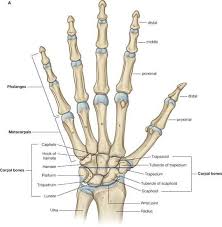DUPUYTREN’S DISEASE
Overview of dupuytren’s disease
A hand deformity that usually develops over a number of years, Dupuytren’s disease (or Dupuytren’s contracture), affects more than 200,000 individuals per year. The condition affects a layer of tissue that lies under the skin of the palm. Knots of tissue form under the skin, eventually creating a thick cord that can pull one or more fingers into a bent position. Firm pits, nodules, and cords may develop that can cause the fingers to bend into the palm, which creates a condition described as Dupuytren’s contracture.
The affected fingers cannot straighten completely, which can complicate everyday activities including placing your hands in your pockets, putting on gloves, or even shaking hands.
Causes of Dupuytren’s contracture
The exact cause of Dupuytren’s disease (or Dupuytren’s contracture), remains unknown. Many medical professionals believe that Dupuytren’s disease typically presents itself due to hereditary or genetic factors. Other factors that may lead to Dupuytren’s disease include smoking cigarettes, regularly consuming extreme amounts of alcohol, certain medications, and poor nutrition.
While many believe that Dupuytren’s disease arrises due to hereditary or genetic factors, certain risk factors may also play a role in disease development. Risk factors include:
- Age- Typically Dupuytren’s disease starts to show symptoms when an individual reaches middle age
- Gender- Doctors observe Dupuytren’s disease in men more often than women
- Family descendants- Doctors typically observe Dupuytren’s disease in those with Northern European backgrounds. Many believe Dupuytren’s disease to have genetic factors.
- Medications- Studies have shown a link between Dupuytren’s disease and certain medications commonly used to treat seizures.
- History of Smoking
- History of abusing alcohol
- Having a history of poor nutrition or Diabetes
SYMPTOMS OF DUPUYTREN’S CONTRACTURE
The initial lumps may produce discomfort that usually resolves with time but Dupuytren’s disease typically does not cause hand pain. The disease may first present itself in the form of an individual having difficulty placing the hand flat on an even surface. For example, a tabletop. With time, the tissue thickens and fingers draw into the palm. When this occurs, one may notice increasing difficulty with activities including washing hands, wearing gloves, shaking hands, and putting hands into pockets.
In the later stages of Dupuytren’s contracture, cords of tissue form under the skin of the palm and can extend up to the fingers. As these cords tighten, the fingers may pull toward the palm, sometimes severely.
Other symptoms of Dupuytren’s disease include:
- Pits in the skin pinched from the contracted finger
- Fingers pulling inward towards the palm of the hand
- Singular or multiple nodules in the palm
- Inability to lay hand flat onto a flat surface
Diagnosing Dupuytren’s disease
To diagnose Dupuytren’s disease, or Dupuytren’s contracture, the hand and wrist orthopedic specialist starts with a physical exam. The doctor asks about medical and family medical history and performs physical tests of the effected hand. Typically doctors do not need to order diagnostic testing but they may order it to ensure lack of other ailments or injury to the hand.
TREATMENT OPTIONS for Dupuytren’s Disease
A variety of treatment options exist for treating Dupuytren’s disease. Treatment of Dupuytren’s disease can range from doing nothing to conservative treatment or surgery. The best treatment for each individual may vary and depends on the location of the cords and nodules are and the severity of the contractures.
Treatments include the following:
- Administering injections like Xiaflex
- Surgery
- Radiation therapy
- Needle aponeurotomy
WHY CHOOSE A XIAFLEX COLLAGENASE INJECTION FOR DUPUYTREN’S CONTRACTURE
Orthopedic hand specialists use collagenase clostridium histolyticum (brand name XIAFLEX) enzyme injections to treat Dupuytren’s contracture. The enzyme dissolves a small portion of the thick cord. During the follow up visit, the physician checks the injection site. After applying a numbing agent, the physician then straightens the finger. The weakened collagen cord snaps when the doctor manually straightens the finger and restores the flexibility of the hand. The treating physician dictates whether or not a patient should receive Xiaflex. Xiaflex may not work on every patient and doctors can utilize other treatment options. A non-surgical resolution for the treatment of Dupuytren’s contracture, Xiaflex injections works to restore mobility to the hand without a painful surgical recovery.
To view a list of all insurances that AOA Orthopedic Specialists accept, click HERE. To schedule an appointment online, click HERE.


